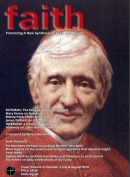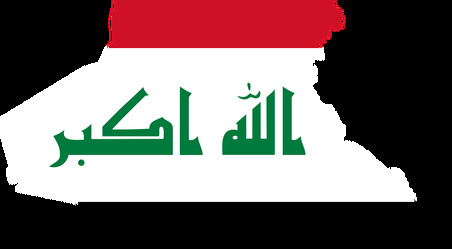Charter of the Rights of the Family (1983-2013)30 Years on – A Pearl of Great Price
Edmund Adamus FAITH Magazine November-December 2013
Edmund Adamus has been the director for marriage and family life in Westminster diocese since March 2012 and was its director for pastoral affairs from 2003. His work covers marriage preparation, marriage support and enrichment, and help for couples in difficulty. He also promotes the doctrine of parents as the primary educator of their children. Here he urges us to look again at an important Vatican document, on the 30th anniversary of its publication.
Historical Origins
In October 1980 the Synod of Bishops called for a charter expounding family rights. Blessed Pope John Paul II welcomed this demand and committed the Holy See to prepare one in his post-synodal Apostolic Exhortation Familiaris Consortio of 1981.
During the Synod, the bishops gave particular attention to the difficulties in which numerous families in many nations found themselves because of institutions and laws which did not help people to know the inviolable rights of the family, or even threatened these rights. In the face of these direct and indirect attacks on the institution of matrimony, and on the life of the family, the urgency of compiling a document to bring to the attention of society and governments the most important rights of the family was compelling.
''Far from competing with analogous documents of civil authority, the charter intends to make a specific contribution to the promotion and safeguarding of the dignity and rights of the person and of peoples.''
That was more than 30 years ago – and now that so many more nations have passed laws bent on distorting the family’s “genome” (to quote the word used by Archbishop Paglia, President of the Pontifical Council for the Family), knowledge of the content and purpose of the charter is even more urgent.
Content and Purpose
The Charter of the Rights of the Family came into being in a climate of contrasts and the refusal of values. At the time it was noted that many nations were violating one or more rights of the family. Since then, not only has the number of such nations increased but, more importantly, the violations have been institutionalised by law and imposed by authority.
In recent years, a tempest has broken out against the institution of the family. The document contains the formulation of those inalienable rights which are inherent to that natural and universal society which is the family nucleus and which states have the duty to defend. A brief introduction explains the genesis, the aim and the style of the charter and makes clear its intended audience. It was the first time that the Holy See had turned to the international community with a document of this type.
The charter had a prophetic characteristic in recalling the attention of all to a global vision of the mission of the family, asking society to respect the rights of the family, and demanding that it give each family the necessary instruments to fulfil its mission. Such a call was in line with the constant appeal of the Church to respect the rights of each person. By this charter, the Church did not want to impose its vision on society. Rather, in a spirit of service, and in the exercise of its mission, it sought to instil within society a higher respect for natural law – the law of the Creator, which is written in the hearts of all human beings.
Its 12 articles present some specific rights regarding:
the foundation of the family and the freedom to choose one’s own spouse;
the just exercise on the part of the spouses of responsible parenthood;
the respect and the protection of life from the moment of conception;
the role of the family in the education of children;
the right of the family to exist and to make progress;
the protection of children, the promotion of the family institution, and the religious rights of the family;
social life (8, 11), culture, economy and finance (9, 10).
The charter deals also with the rights of particular groups who merit special consideration in society, such as elderly people, migrants, people with different capabilities, and prisoners (12).
Nature and Style
It is important that the nature and the style of the charter be correctly understood. The document is not a dissertation in dogmatic or moral theology on marriage and the family, although it reflects the thought of the Church on the subject. Nor is it a code of behaviour for persons or institutions who have an interest in the problem. The charter differs also from a simple declaration of theoretical principles regarding the family. It aims rather to present to all, whether they are Christians or not, a formulation of the fundamental rights inherent to that natural and universal society which is the family. The rights enunciated in the charter are expressed in the conscience of the human being and in the values that are common to all humanity. The Christian vision present in the charterfinds its source in divine revelation, which enlightens the natural reality of the family. These rights, ultimately, are born from that law which is inscribed by the Creator in the heart. Society is called to defend these rights from violations, to respect them, and to promote them.
The charter refers continually to the Universal Declaration of Human Rights. Never before had the central bodies of the Church published a document of this type. Its form is analogous with documents which are usually published by international organisations. Accordingly, the charter assumes the value of a declaration of principles and an enunciation of rights. Far from competing with analogous documents of civil authority, the charter intends to make a specific contribution to the promotion and safeguarding of the dignity and rights of the person and of peoples.
It defends principles which have their own intrinsic value. Such principles are binding because of their own truth. Their urgency and validity are universal and absolute. The basic framework of the charter tends to propose principles and values that every rightly formed conscience and every intelligence uncorrupted by error can perceive, even without the light of Christian revelation. In reaffirming, for the good of society, the common knowledge of the essential rights of the family, the charter offers to all those who share the responsibility for the common good a model and a point of reference for elaborating a legislation and a policy of the family, as well as a guide for programmes of action.
Affirming Errors as Errors
Experience shows that many half-truths about the family have ended up imposing themselves and being accepted. To oppose these errors, which undermine the family, one needs to affirm errors as errors, and then to proclaim courageously and ceaselessly the Gospel of family life.
The Charter of the Rights of the Family was drawn up to present truths that the Church can proclaim to the men and women of our times. Thirty years on from its promulgation, the wisdom it contains needs to bear fruit to ensure that all families of whatever creed or culture might enjoy a better future. In 2015 it will be the 800th anniversary of the Magna Carta – and no doubt there will be many events portraying it as the seedling from which would develop those uncontested rights to personal liberty and freedom that exist under the law across many nations.
I can think of no better way to prepare for that anniversary than by revisiting the Charter of the Rights of the Family. We should seize the opportunity to do so, for as Familiaris Consortio 44 states: “Families should grow in awareness of being ‘protagonists’ of what is known as ‘family politics’ and assume responsibility for transforming society; otherwise families will be the first victims of the evils that they have done no more than note with indifference.”
Postscript
“As the Church, we offer a concept of the family rooted in the Book of Genesis, of the unity in the difference between man and woman, and the fruitfulness of this complementarity, and we recognise it as an asset for all, as the first natural society. … The family understood in this way remains the first and principal building block of society and of an economy on a human scale. … The consequences, positive or negative, of decisions of a principally cultural or political nature in relation to the family touch upon the various areas of the life of a society and a country” (Pope Francis, Message to participants in the 47th Social Week for Italian Catholics, 13 September 2013).






